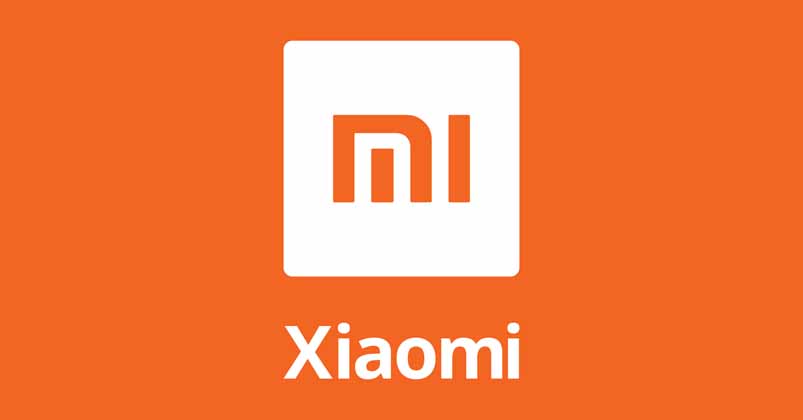
Be honest, where did you buy the phone you’re currently using; from an official store in Nepal, or did you import it from some unofficial channel? Don’t worry, I’m no snitch. But the grey market is a grave issue lurking in the smartphone industry of Nepal. And it’s something so serious that it has crumbled the economy, took away the jobs of many working men/women, & frankly, has hurt the innovation in the domestic smartphone scene. Don’t believe me? Swallow the red pill, Neo, and I’ll show you how deep the rabbit hole goes.
Smartphone Grey Market in Nepal
Let’s start it nice & slow and understand what those unofficial channels are. Also dubbed as “grey markets”, it refers to the distribution of genuine goods, but via an unofficial channel. In other words, it is the exchange of a company’s products in a marketplace that doesn’t involve any players in the official supply chain.
What that means is that all the expenditure incurred throughout the supply chain doesn’t get a chance to recover; since that step is effectively and entirely cutoff by some unrecognized marketmonger.
Now, this would really not be a problem for small businesses with a zero-level distribution channel, but that’s simply not the case in terms of the smartphone industry. With so many participants in the supply chain involved in getting the phone to the market, such practice actively destroys the channel. Besides the manufacturer, there are national distributors, regional distributors, local distributors, retailers (mobile shop), and brand promoters.
Grey Market → Job Loss & Reduced Marketing by Brands
Because of this, there’s an expense count on every one of those players in the official distribution channel. In an effort to keep the price of a smartphone lower and keep fighting against the grey market, smartphone brands in Nepal have begun to find ways to cut costs in ways not actualized before.
Firstly, mobile brands have started firing promoters. For example, there used to be over 100 sales promoters from offline smartphone brands like OPPO and Vivo back in 2017. But right now, the number has decreased by more than 50%. This indicates just how many jobs have been lost in the Nepalese smartphone scenario.

Secondly, mobile brands in Nepal have reduced their marketing budget. You do remember seeing ads of phones in Nepali TV channels and mainstream newspapers, right? What happened to those? They’re virtually non-existent these days. Brands have also skimped on ad campaigns, BTL marketing, and even digital advertisement.
Hence, with phones entering the country illegally in large quantities, the top-level distributors are forced to import the smartphones in lesser and lesser volume. This means, the official domestic business goes further down and may even fuel the probable downfall of such companies in Nepal in the long run.
“Pfft… but what do I care? I’m not solely & exclusively responsible for the survival of a corporate entity! I wanted it, I bought it. Where’s the harm in that?”
True. You’re no messiah to the industry and frankly, no one is; let’s rip that band-aid right off. However, you’re also not the only one importing phones for personal use from abroad – hundreds of thousands of people factor-in. With that collective but non-concurrent action, the magnitude of impact becomes exponential.
“Still, I don’t see any disadvantage of that to me, personally.”
Actually, there is, in so many ways. Primarily, you may fall victim to counterfeit products since you’re dealing with unofficial channels. That should be concerning, shouldn’t it?
Also, if there’s something strange, in your brand new phone, who you gonna call?
Not the official stores, I’ll tell you that. In a bid to discourage the grey market, smartphone brands in Nepal now don’t provide any service for such phones. Xiaomi and Samsung Nepal in particular come to mind. As one of the prime victims of the grey market, they’re one of the most vocal parties against the illegal import of smartphones.

Business-level Grey Imports!
Besides individual imports, even a large number of mobile shops are hellbent on grey imports as well. While there were only a handful of players bringing in smartphones illegally in the past couple of years, the number has now skyrocketed, with some businessmen even opening up shops solely dedicated to buying/selling phones brought through unofficial channels. This is more evident in cities like Birgunj, where there’s easy access to the Indian border. Yeah, the open border with India isn’t helping anyone.
Grey Market → Risk for Illegal Importers too. But how?
Such operation poses a risk to mobile shops too. You see, there’s this thing called “price-protection”. Initiated by mobile brands in Nepal, it’s a contract between the distributor & mobile shop whereby an agreement is made such that the mobile shop would receive a refund, in case the company issues a price-drop on the phone.
For example: let’s say the MRP of a phone “Z” is Rs. 50,000 and the shop’s profit margin on it, is Rs. 5,000. But the national level distributor decides to discount the phone to Rs. 40,000 as a promotional offer. Here, the shop selling it officially will still retain the 5K profit margin even when selling it for 40K.
However, the mobile shop who imported the same “Z” phone illegally, for say, Rs. 43,000 is now at a loss. Forget a higher profit margin of Rs. 7,000, s/he now faces a loss of at least Rs. 3,000 since the unofficial channel doesn’t guarantee any sort of price-protection.
What is the government doing about it?
Ok then. Because of the grey market, the smartphone brands in Nepal are hurting, and so are the distributors, mobile shop, and even the consumers. Mr. Lokesh Oli (Executive Director, Oliz Store) revealed the sales figure of Apple’s iPhone in Nepal to us.
According to him, roughly 2,500 iPhones are sold every year through official means, whereas the number reaches a staggering 50,000 units (including both new and used) when it comes to the grey market.
Another dishearteningly evocative example of the smartphone industry in Nepal.
Other than the players in the supply chain, the government is also facing some major revenue loss on top of other complications because of the grey market. First and foremost, a major chunk of money in terms of VAT, excise duty, etc. gets unearned and that’s always a big head-turner. And as mentioned earlier, with illegal imports flourishing, employment opportunities take a major hit, which then cumulates to the already burdening problem of unemployment in the country.

Therefore, why isn’t the government taking any stand against it, or it is just too complicated and out of reach of the Nepal government?” And, as stupid as it may sound, if you, look at the 2077/78 budget announcement. It’s evident that the Nepal Government is looking for a surge in revenue, especially from the ICT and EV sectors. The Government even imposed a huge tax on the steadily flourishing EV (Electric Vehicles), which clearly indicates government intentions to generate more revenue from the tech sector. Here, the argument above is further supported by how the government introduced excise duty on various mobile accessories as well.
So, shouldn’t the government come with a plan to eradicate the grey smartphone market of Nepal to generate more revenue from official sales of smartphones through VAT and excise duty?
Excise Duty on Smartphone Imports
Believe it or not there actually used to be a tax refund, such that the importers in the country would get a certain percentage (up to 40%) of the tax paid back, at the end of the fiscal year. That certainly played a massive role in the growth of the smartphone business in the country.
However, the government turned the table against the industry and eliminated the tax refund. On top of that, it introduced an additional 5% excise duty (which has since been reduced to 2.5% because of all the complaints from the industry enthusiasts) on smartphone imports.
As a result, the average price of smartphones in Nepal has escalated by a great margin in the past couple of years.
Since there are no phone manufacturing plants in the country, the government’s actions can’t even be justified as an attempt to promote local production.
On the contrary, the Sri Lankan government considers smartphones as an educational commodity rather than a product of luxury. Thus, it levies a 0% excise duty on smartphone imports. Similarly, Bangladesh imposes a horrendous 32 – 50% tax on imported smartphones. But that’s only to support its “Made in Bangladesh” campaign.
Taking A Page Out Of Bangladesh’s Book
The country is looking to become self-sufficient in smartphone production as international OEMs like Vivo & OPPO are looking to set up manufacturing plants in Bangladesh, while the number one smartphone brand in the world – Samsung, has already set up shop.

You can still import phones for personal use in Bangladesh, but you have very little incentive to do so. Let’s look at an example: The new Samsung Galaxy S20 Ultra costs BDT. 129,999 there. If one were to import the same phone from India, which goes for INR. 97,999 (BDT. 109,394), s/he still has to register it at the Bangladesh Telecommunication Regulatory Commission (BTRC) to be able to use the device in the country.
Now, let’s apply the minimum level of excise duty on it (i.e. 32%), then the phone ends up amounting to BDT. 144,400, which is more expensive than what the phone costs when bought locally.
Solution for Eradicating Grey Market? → IMEI Registration
Though things sound bleak and hopeless in the smartphone scenario of Nepal, there’s a really simple and effective solution against the grey market – mandatory IMEI registration. Some of you may already know what it is but allow me to elaborate on it anyway.
IMEI (International Mobile Equipment Identity) is a unique identifying number of a phone in a GSM & WCDMA network, which are the ones available in Nepal. “But what about CDMA phones?” Yes, it has a separate standard called MEID (Mobile Equipment Identifier), while ESN (Electronic Serial Number) is also used. Anyway, we’ll not be talking about them since CDMA service is being discontinued in Nepal.
It is a series of numbers, which may either be 15 or 17 in length, and a phone with dual-SIM support will have two IMEI numbers. You can find your phone’s IMEI number(s) by looking it up in the “About Phone” settings of your phone, or type *#06# in the dialer. This number can be used as an identifier for a legal device & because this is unique to each phone, it opens up an excellent alley for mitigating illegal smartphone imports.
Every phone that the smartphone brands import has to be registered at Nepal Telecommunications Authority (NTA). And working together with the telecom service providers, NTA can easily track down and immobilize illegally imported smartphones. Sadly, the process hasn’t been mandated yet, hurting the business as days go on, though things are about to change.
Two major obstacles were stopping this from going forward. First – a lack of proper regulation condemning the practice to be compulsory. Without any legal obligation to back it up, the process simply cannot move forward.
A Need For Unity
Then there’s the need for the collaboration between the network providers (like NTC, Ncell, Smart Cell) and NTA to share & synchronize the database of their users. Since there’s no point in blocking illegal phones if the network providers allow them to be operable, NTA cannot act alone in this. And an agreement for such a delicately crucial subject matter isn’t reached in the time you’d want it to, not in Nepal at least.

Also Read: Best Telecom Service Providers in Nepal (Updated)
As it happens, mandatory IMEI registration of phones was already supposed to be introduced months ago. Nevertheless, a system for registering a phone’s IMEI number online has gone live from about 2 years ago (Feb 13, 2018). You can register your handset by filling in the details at “eir.nta.gov.np”. Yet, this is not the ideal system for the problem at hand. The EIR (Equipment Identity Registration) system required manual registration of IMEI codes imported through authorized channels by NTA.
“With that out of the way, can we afford to delay the implementation of IMEI registration?”
Absolutely not! Thousands of grey smartphones land the country every day, be it from domestic/foreign travels entering Nepal, or via the open border with India. And I hope I’ve already made it vividly clear how that’s a leak in the country’s economy, and how it maims the official smartphone business.
Here, Mobile Phone Importers Association (MPIA) Nepal has been relentlessly working to fast track the process. It is an umbrella association of companies distributing and representing major smartphone brands in the country, which has been adamantly demanding for rapid progress in the eradication of the issue.
Aside from government lobbying, MPIA has also been working towards introducing a “genuine sticker” policy in smartphones; to encourage buyers to buy official products only. Disappointingly, they’ve been met with minimal success since the major parties involved are yet to come at an agreement.
Until now. It looks like NTA is finally ready to introduce the ultimate solution against the unauthorized import of smartphone handsets. Mobile Device Management System (MDMS) is in its final stages of implementation, after almost 2 years. Initiated in 2018 by NTA, the project was collectively tendered to OSI Consultancy (India), Numera SDN BHD (Malaysia), and Namaste Global Communications (Singapore) at an expense of a little over 7 million USD.
What’s Next?
With MDMS in place, only the smartphones imported through official channels will be allowed to be functional inside Nepal, while the ones that aren’t will be blocked. This system also changes the IMEI registration technique from manual to web-based.
“But what about phones you receive as gifts from your friends, relative, or peers abroad? Will those be useless too when they arrive in Nepal?”
Valid question. But don’t worry about it since there’s already a system in place for it. All you gotta do is register the phone in the system. And it will most likely come with a nominal percentage of a fee; though the exact number is yet to be confirmed.
Smartphone Grey Market in Nepal: Conclusion
Time to wrap it all up! Grey market is a major black cloud in the skies of the smartphone industry in Nepal. Not only does it hurt the brands, but it’s also a pain to the government, distributors, mobile shops, and customers; meaning everyone involved in the process.
From personal imports to raking them in bulk (especially through the Indian border), the official smartphone business in Nepal is in anguish. Still and all, there’s an elegantly ingenious solution to this debacle. Mandatory registration of every single smartphone that enters the country by NTA is something that should’ve existed a long time ago. The imminent implementation of MDMS is a whole-hearted welcome in the Nepalese smartphone industry.
With NTA and the network providers collaborating, this is the most effective way to eradicate grey imports in Nepal. Policymaking really hasn’t been our government’s strongest suites but it’s humbling to see how organizations like MPIA & brands have worked to counter the conundrum amidst the lack of support and the organized chaos.




















![Best Mobile Phones Under Rs. 15,000 in Nepal [Updated] Best Phones Under 15000 in Nepal 2024 Budget Smartphones Cheap Affordable](https://cdn.gadgetbytenepal.com/wp-content/uploads/2024/03/Best-Phones-Under-15000-in-Nepal-2024.jpg)
![Best Mobile Phones Under Rs. 20,000 in Nepal [Updated] Best Mobile Phones Under NPR 20000 in Nepal 2023 Updated Samsung Xiaomi Redmi POCO Realme Narzo Benco](https://cdn.gadgetbytenepal.com/wp-content/uploads/2024/01/Best-Phones-Under-20000-in-Nepal-2024.jpg)
![Best Mobile Phones Under Rs. 30,000 in Nepal [Updated]](https://cdn.gadgetbytenepal.com/wp-content/uploads/2023/12/Best-Phones-Under-30000-in-Nepal-2024.jpg)
![Best Mobile Phones Under Rs. 40,000 in Nepal [Updated] Best Phones Under 40000 in Nepal 2024 Smartphones Mobile Midrange](https://cdn.gadgetbytenepal.com/wp-content/uploads/2024/02/Best-Phones-Under-40000-in-Nepal-2024.jpg)
![Best Mobile Phones Under Rs. 50,000 in Nepal [Updated] Best Phones Under 50000 in Nepal 2024 Smartphones Midrange](https://cdn.gadgetbytenepal.com/wp-content/uploads/2024/02/Best-Phones-Under-50000-in-Nepal-2024.jpg)
![Best Flagship Smartphones To Buy In Nepal [Updated] Best Smartphones in Nepal 2024 Flagship Premium Samsung Apple iPhone Xiaomi OnePlus Honor](https://cdn.gadgetbytenepal.com/wp-content/uploads/2023/09/Best-Smartphones-in-Nepal-2024.jpg)